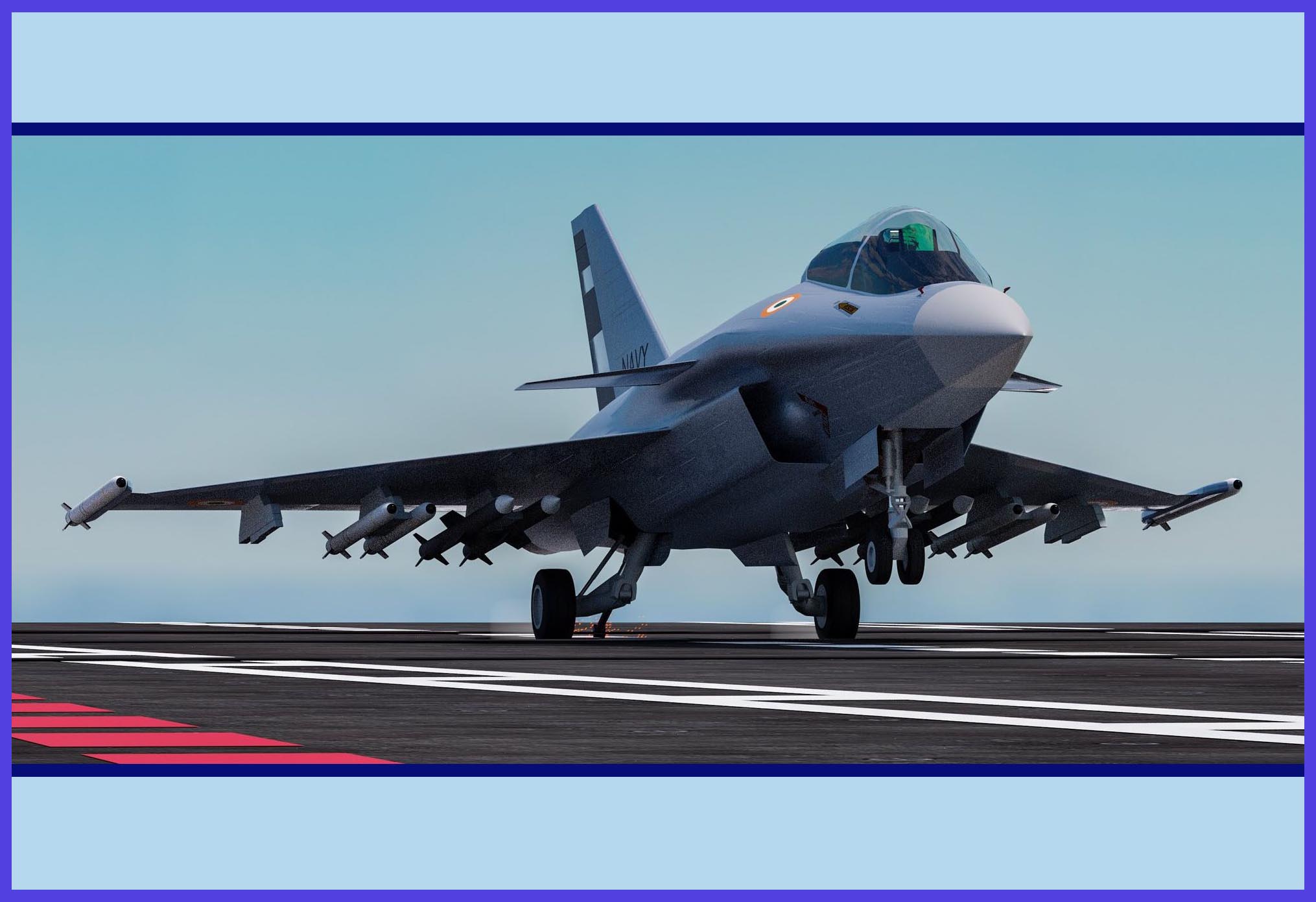
The TEDBF, short for “Twin Engine Deck-Based Fighter,” is set to incorporate a range of notable features. These encompass advanced avionics, powerful radar systems, and a modern digital cockpit. With its twin engines, the aircraft will offer enhanced thrust, reliability, and redundancy to facilitate carrier takeoffs and landings. The fighter will also come equipped with advanced weapons systems, ensuring its versatility for both air-to-air and air-to-ground missions.
The fighter’s mission profile includes air supremacy, air interdiction, anti-access/area denial (A2/AD), anti-ship warfare (ASW), and electronic warfare (EW) missions. An integral part of the TEDBF’s role is replacing the MiG-29K on the INS Vikramaditya and the INS Vikrant of the Indian Navy.
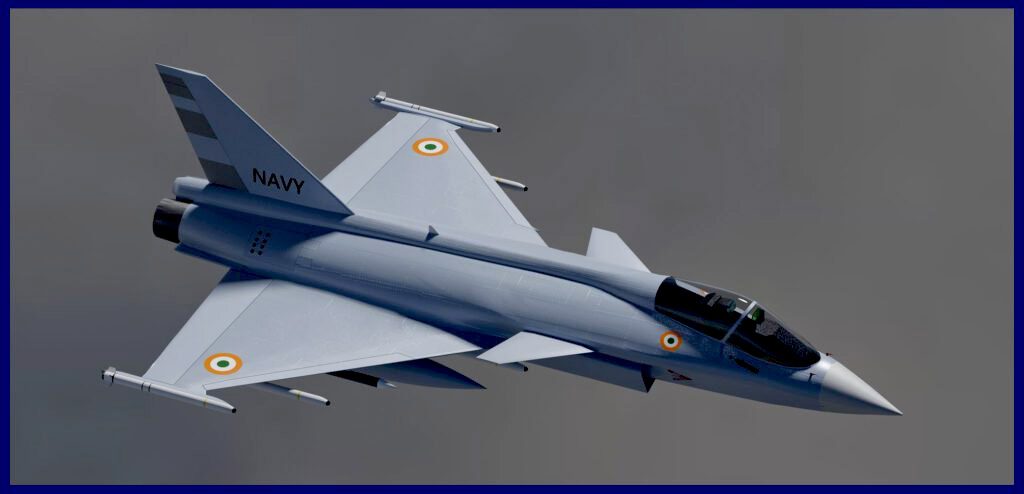
TEDBF Development Updates as of 2023
The naval program to develop a carrier-based fighter for the Indian Navy was initiated in 2003. The ADA was tasked with designing and developing a new naval fighter based on the existing Tejas template. The program was designed to be executed in two phases and received joint funding from the DRDO and the Indian Navy. The first naval prototype, a two-seater NP-1, completed its maiden flight on April 27, 2012, while a single-seater NP-2 was unveiled in 2015.
Although the tests proceeded as scheduled, the Indian Navy lacked confidence in the naval LCA program. This uncertainty stemmed from the realization that future requirements beyond 2030 necessitated more robust and technologically advanced fighters, with twin-engine configurations being the preferred choice to support future avionics system requirements and to withstand the demands of arrested landing and recovery operations over extended periods. Consequently, in December 2016, the Indian Navy withdrew from the program entirely.
Despite this, prototype testing continued, focusing on the concept of an advanced trainer for the naval fleet. By early 2020, the naval LCA had achieved significant milestones, including successful night-time arrested landings at the Goa SBTF and carrier takeoffs and landings on the aircraft carrier INS Vikramaditya and Vikrant on 6 February 2023.
In mid-2020, the Government of India approved a project to meet the naval requirements. Research indicates that the first TEDBF aircraft model was unveiled at Aero India 2021. The aircraft is designed as a twin-engine, medium-weight-class fighter with foldable wings for more compact storage, catering to the needs of a dedicated deck-based fighter. A significant portion of the fighter’s weaponry is planned to be domestically produced. If all goes as planned, the first flight is anticipated in 2026, and production is scheduled for 2031. The aircraft’s design is expected to benefit from the experience acquired in the Naval LCA program.
The estimated cost for four prototypes, as indicated by the Project Director, is ₹14,000 crore. ADA is actively seeking joint development opportunities with the Indian private sector. The Indian Navy intends to begin induction in 2032, coinciding with the retirement of the Mikoyan MiG-29K. In the meantime, alongside this project, the Indian Navy has finalized its immediate fighter requirements for 2023 by acquiring French Dassault Rafale-M aircraft for operation from the newly commissioned INS Vikrant aircraft carrier. This procurement includes a total of 26 aircraft, including two trainer variants.
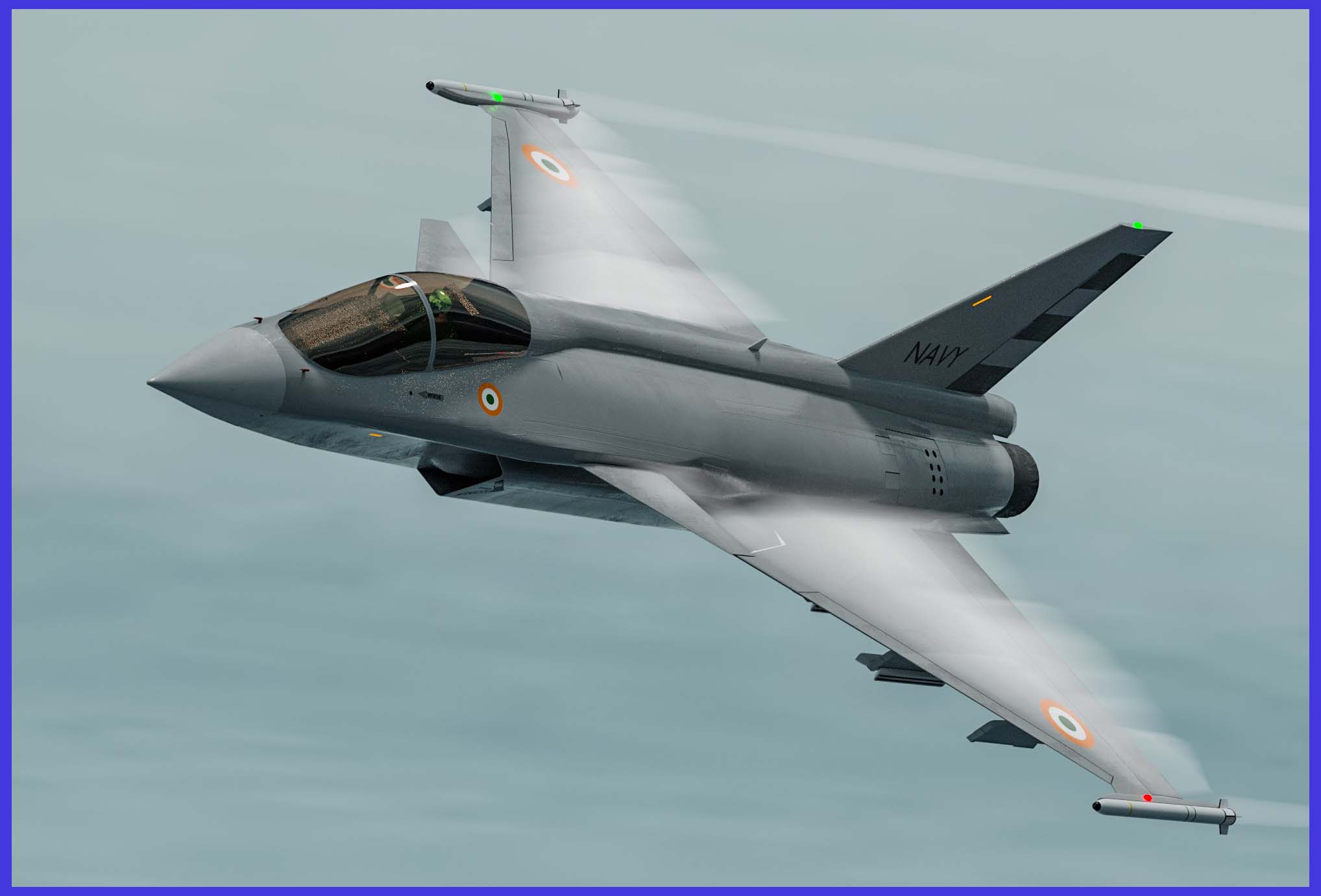
The TEDBF Design Updates
- Carrier Compatibility: This twin-engine aircraft design enables shorter takeoffs from aircraft carriers equipped with the Indian Navy’s STOBER (Short Take-Off Barrier Arrested Recovery) system. Its design incorporates essential features, including reinforced landing gear, a tail hook for arrested landings, and foldable wings with more compact storage to optimize space utilization on the carrier deck. Furthermore, the design integrates partial stealth technologies aimed at reducing radar cross-section (RCS) and elevating the aircraft’s survivability in challenging and hostile environments.
- Canard and Delta Wing Configuration: The aircraft will be equipped with canards to expand the lifting surface area. Delta wing designs are commonly used in many carrier-based aircraft to enhance manoeuvrability and control across a broad spectrum of speeds. While sharing similarities with the Rafale, delta wings typically reduce drag, enhancing fuel efficiency and overall performance.
- Advanced Avionics: The aircraft is expected to feature cutting-edge avionics, which may include the LRDE Uttam AESA Radar, electronic warfare systems, and a modern glass cockpit with advanced display technology.
- Twin-Engine Configuration: The TEDBF’s twin engines provide augmented power, redundancy, and improved performance, especially during takeoff and landing on the relatively short deck of an aircraft carrier. The initial aircraft will be equipped with General Electric F414 after-burning turbofan engines, with each engine delivering 58.5 kN (13,200 lbf) of thrust in dry mode and 98 kN (22,000 lbf) with afterburner.
- Materials: The aircraft will utilize lightweight composite materials and advanced construction techniques to minimize weight while enhancing structural strength. Currently, the planned empty weight stands at 14,000 kg (30,865 lb).
Upon the commissioning of the proposed INS Vishal as India’s third aircraft carrier, the fighter will undergo necessary modifications to support Catapult Assisted Take-Off Barrier Arrested Recovery (CATOBAR) operations. However, as a result of the TEDBF initiative, the Indian Navy has revised its orders for foreign fighters, including trainer variants, reducing them from 57 aircraft to 26. Consequently, during the visit to France by the Honorable Prime Minister Mr Narendra Modi in 2023, the Indian Navy opted for the Rafale-M.

Additional Aspects of the Program
Plans also include the development of the Omni-Role Combat Aircraft (ORCA), an additional derivative for the Indian Air Force based on a variant of the TEDBF design. Anticipating a requirement for over 750 aircraft between 2030 and 2050, the Indian Air Force may proceed with the creation of ORCA in conjunction with the HAL AMCA if the necessary funding is secured. In 2023, the ADA is scheduled to submit the preliminary design review. The prototype will undergo 1,000 test flights. Currently, it is undergoing wind tunnel testing, while DRDO is conducting high-speed modelling to evaluate the aircraft’s supersonic capabilities.
TEDBF Salient Features Will Be
- Wing Folding Arrangement For Carrier Spotting
- Automatic Carrier Landing System For High Precision Landing On-Board Carrier
- Man, Un-Manned Teaming for Net-Centric Operations
- Buddy Refuelling Pod Integration For Tanker Role
- Active Fuel Transfer System For Better CG Control
- On-Deck Alignment System
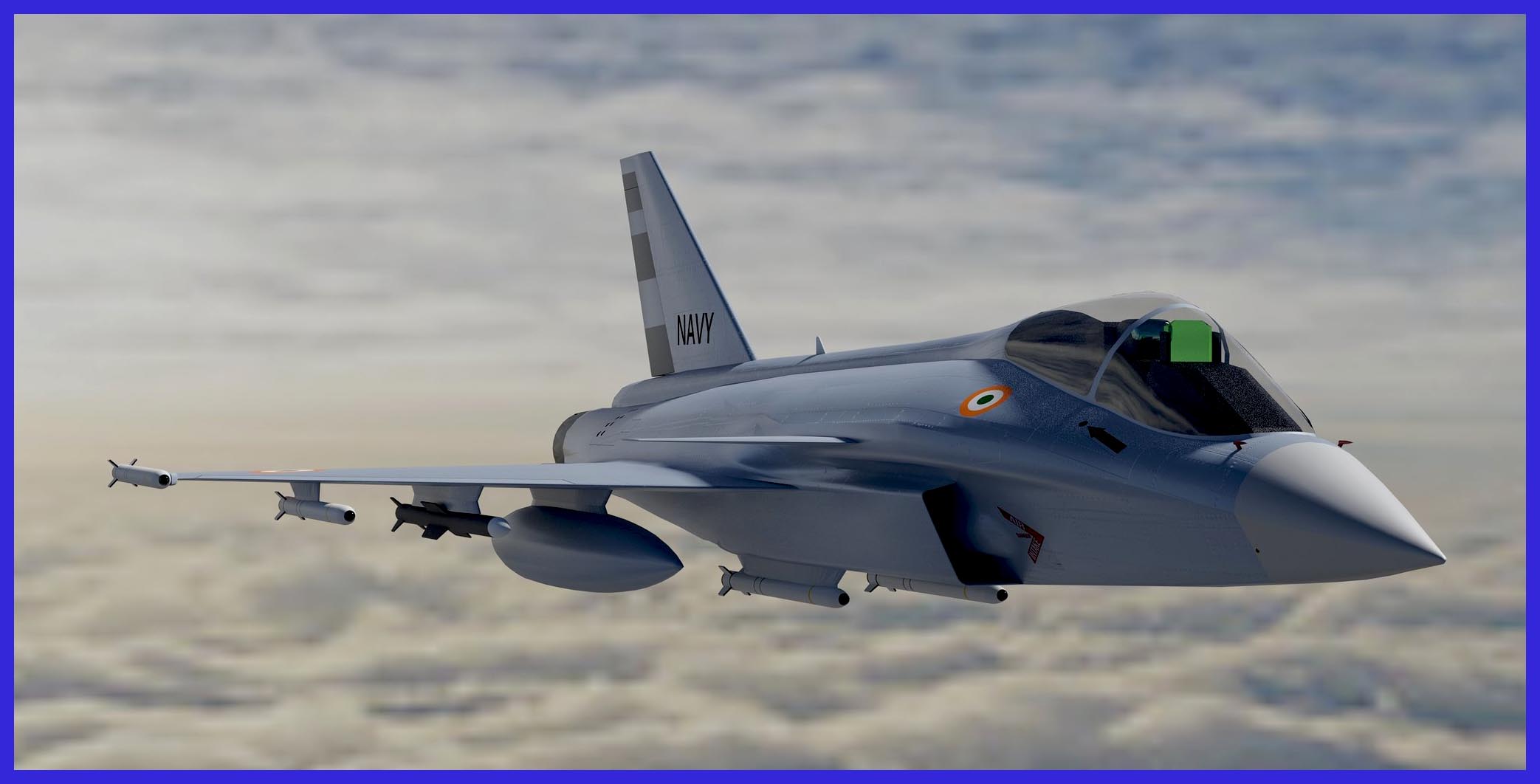
TEDBF Expected Specifications ( as of 2023 )
- Length: 55 ft 77 in ( 17 M )
- Wing Span: 38 ft ( 11.58 m ) / 24 ft 11 in ( 7.34 m ) Folded
- Height: 18 ft ( 5.48 m )
- Service ceiling: 55,000 ft ( 16,764 m )
- ‘g’ limits: +8/-3 g
- Empty weight: 14,000 kg ( 30,865 lb )
- Max take-off weight: 26,000 kg ( 57,320 lb )
- Power plant: 2 x GE F414 After burning Turbofan 58.5 kN (13,200 lbs ) thrust each dry, 98 kN (22,000 lbs ) with an afterburner.
- Max Speed: Mach 1.8
- Hardpoints: A total of 11 hard points will be available on the aircraft: 2 on the wingtips, 6 under the wings, and 3 under the fuselage. These hard points are designed to accommodate various combinations of the latest generation Air-to-Air missiles, including Astra, ASRAAM, Python-5, and Derby. Additionally, the aircraft can carry Air-to-Surface Missiles like the NASM-MR (a Harpoon-class anti-ship missile) and Rudram-1, as well as Precision-guided and Laser-guided Bombs.
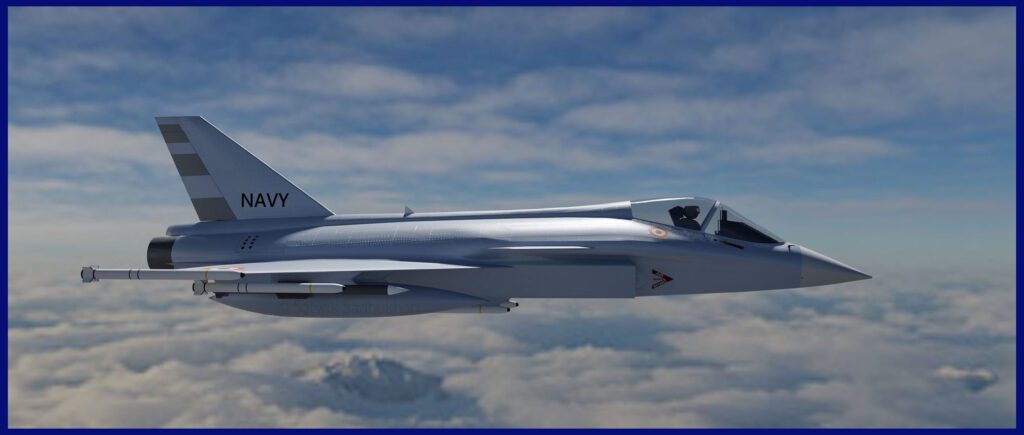

Important Announcement for Our Valued Readers!
After an article is published, it is possible that updates or changes may have occurred beyond the time of publication. Therefore, it is important to be aware that certain information in the article might be outdated. To ensure the most accurate analysis, it is highly recommended to verify the content with the latest sources available.
However, we are dedicated to delivering outstanding articles on military products and global updates. Maintaining quality and smooth operation requires resources. Your support sustains our efforts in providing insightful content. By purchasing high-quality products through our affiliated links, you help us keep our platform alive and acquire top-notch items. Your unwavering support is invaluable and inspires us to strive further.
We welcome your suggestions and requests for more information, as we value feedback from our readers. If there’s specific defence material or equipment not covered on our site, please share your request in the comments. We’ll strive to research and provide the required information. We sincerely thank you for your unwavering interest in our website, and we eagerly anticipate hearing from you! Enjoy your reading experience!
